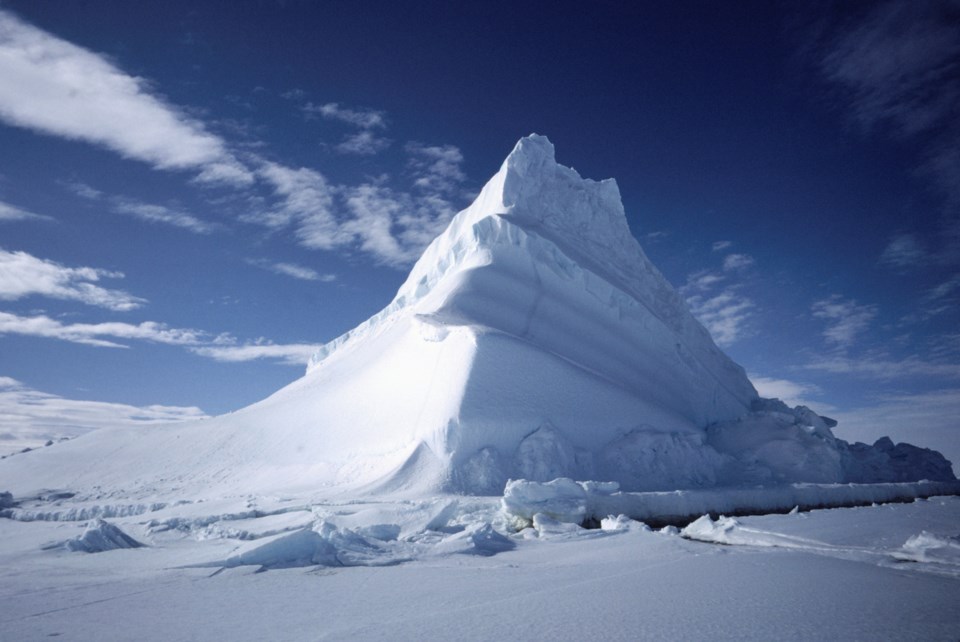When news that Parks Canada had discovered the long lost wreck of the HMS Erebus last year near King William Island in Nunavut, it closed a chapter on one of the most enduring mysteries of the Canadian North.
For more than 150 years, explorers and archeologists alike had sought to find any trace of Sir John Franklin’s lost expedition. In 1845, Franklin and 128 men set out in two ships, the Erebus and the Terror, to discover the Northwest Passage. Instead the arctic closed in around them, and they were never heard from again.
The Vancouver Maritime Museum’s newest exhibit, Across the Top of the World: the Quest for the Northwest Passage, details Franklin’s doomed journey, and the subsequent search for answers, including the recent discovery of the Erebus.
The exhibition, which is based largely on James Delgado’s book of the same title, was set to launch last year when word of the Erebus’ discovery became known. The museum decided to put off the exhibition for a year so it could include this new chapter in arctic exploration.
“It was an exciting time for us,” says Ken Burton, executive director of the Vancouver Maritime Museum. “We were in the process of rolling this show out when they found the Erebus.”
The exhibit traces back the chronology of arctic exploration, beginning with the Inuit, Eskimo, and Paleo-Eskimo, and continuing through the European exploration by the likes of Henry Hudson, Martin Frobisher, James Cook, George Vancouver, and of course, John Franklin.
Among the artifacts on display are the rudimentary navigational tools early explorers used to find their way around the north, as well as historical documents like the British Acts of Parliament that helped pave the way for the commission of Franklin’s ultimately doomed expedition.
By the early 1800s it had already been determined the Northwest Passage – should it exist – wasn’t economically feasible as a trade route. However, there was still a desire to find it, once and for all, says Burton, and a substantial cash reward was offered to the person who could do just that.
“The Napoleonic Wars were over, so you had this large navy that was looking for a purpose,” says Burton.
“That purpose became exploration.”
When no word was heard from expedition for three years, Franklin’s wife pressured the British Admiralty to conduct a search for the missing men and close to 20 rescue missions and search parties were launched in the decade following his disappearance. Those search efforts led to the mapping of the Canadian Arctic archipelago, including the ultimate discovery of the Northwest Passage, and helped strengthen Canada’s claim to the arctic, says Burton.
“It was the largest search ever conducted in human history,” says Burton.
In 1854, explorer John Rae discovered the remnants of Franklin’s crew stretched across the arctic tundra. After Franklin’s ships had become trapped in the arctic ice, the crew abandoned ship to find food and headed south, carrying their sledges. Overburdened and unprepared, the crew soon succumbed to the harsh conditions of the arctic, leaving behind a string of corpses that showed signs of cannibalism.
While explorer Rae was ultimately awarded £10,000 (equivalent to more than $1 million today) for solving the mystery of Franklin’s lost expedition, the search for the Erebus and Terror has never really ended.
“I spent a year myself searching for [the Erebus and the Terror] in the high arctic in the early 2000s,” says Burton.
So far, the only artifact to come off the Erebus has been the ship’s bell, and the search for the Terror – believed to be lying in shallow water nearby – is still on.
“This was one of the great mysteries of the last 150 years,” says Burton. “It’s a remarkable find."
• The Vancouver Maritime Museum is located at 1905 Ogden in Vanier Park. VancouverMaritimeMuseum.com


